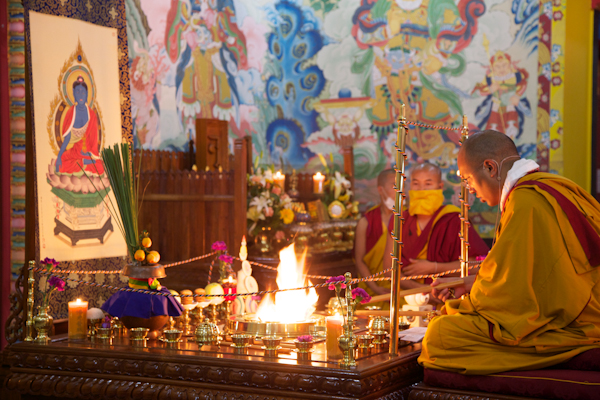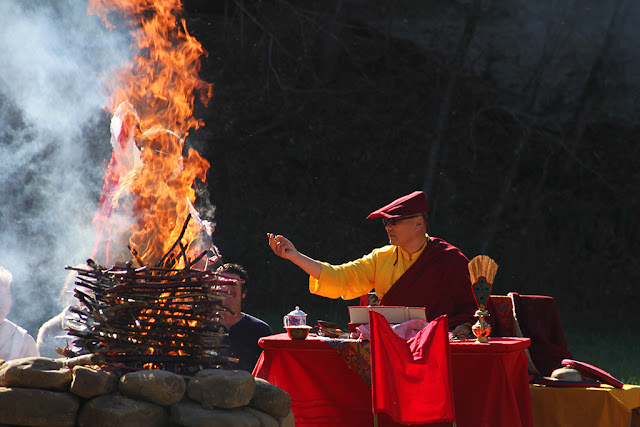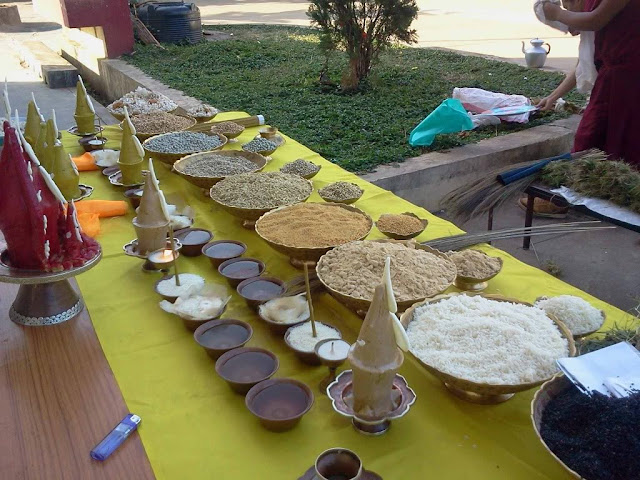Merit is to be accumulated.
Evil is to be abandoned.
Merit and wisdom in Sanskrit are known as “Punya and “Jnana” .
In Tibetan known as “Sonam” and “Yeshi”.
In Chinese is “功德” and “智慧”
1 ) Merit
Is a concept considered fundamental to Buddhist ethics. It is a beneficial and protective force which accumulates as a result of good deeds, acts, or thoughts. Merit-making is important in Buddhist practice: merit brings good and agreeable results, determines the quality of the next life and contributes to a person's growth towards enlightenment. In addition, merit is also shared with a deceased loved one, in order to help the deceased in their new existence.
Merit is a force that results from good deeds done; it is capable of attracting good circumstances in a person's life, as well as improving the person's mind and inner well-being. Moreover, it affects the next lives to come, as well as the destination a person is reborn.
Merit can be gained in a number of ways, such as giving, virtue and mental development. There are many forms of merit-making described in ancient Buddhist texts. The most fruitful form of merit-making is those good deeds done with regard to the Triple Gem, that is, the Buddha, his teachings, the Dhamma and the Sangha.
Merit has become part of rituals, daily and weekly practice, and festivals. In addition, there is a widespread custom of transferring merit to one's deceased relatives. Merit is a "beneficial and protective force which extends over a long period of time and is the effect of Karma done through physical action, words, or thought.
The way meritorious works, is that acts of merit bring good and agreeable results, whereas demeritorious acts bring bad and disagreeable results. A mixture of the two generates mixed results in a person's life. This explains why people are different and lead different lives in many ways.
Karma is self-regulatory and is the cause and effects of positive and negative actions. In today's world we called it the Law of the Universe: it operates without divine intervention and human intention is fundamental to it.
Internally, merit makes the mind happy and virtuous. Externally, present good circumstances, such as a long life, health and wealth, as well as the character and abilities someone is born with, arise from merits done in the past and vice versa, with demerits.
The merits and demerits a person has done may take a while to bear fruit. This is how most often people arguing that ones had done many good deeds, yet still facing many harsh ship or unpleasant incidents or bad things happens to them. Likewise, those who has done bad karma , yet he or she is still having a very happy and luxurious life.
Merit or demerit may cause a good or bad future respectively, including in the next lives to come. A bad destination after rebirth may be caused by demerit, but merely a lack of merit may also lead a person to be born in an unhappy destination.
When someone is reborn in a happy destination, however, one can only stay there as long as merits last. Thus, it is stated in the Buddhist scriptures that people cannot take anything with them when they die, except for whatever merit and demerit they have done, which will affect their future.
When someone is reborn in a happy destination, however, one can only stay there as long as merits last. Thus, it is stated in the Buddhist scriptures that people cannot take anything with them when they die, except for whatever merit and demerit they have done, which will affect their future.
Merit can be accumulated in different quantities, and stored up, but also has an impermanent character: it can run out.
How to generate merits?
Merit is not only a concept, but also a way of living. Three bases of merit :-
1) Generosity or giving
2) Virtue - The defined by the three factors of the Eightfold Path:-
Right Speech, Right Action , Right Livelihood.
Right Speech, Right Action , Right Livelihood.
3) Mental development / Samadhi – Meditation
Do you earnestly cherish our devoted work? Assuming this is the case, we are delighted that you are finding our blog useful. Would you consider making a donation for our Buddhist research and development? We need you to help secure the future of scholarly interaction with Buddhism.
Please consider showing your support .Your generosity will certainly help us improve our works and to achieve for a better and brighter prospect to come.
Do you earnestly cherish our devoted work? Assuming this is the case, we are delighted that you are finding our blog useful. Would you consider making a donation for our Buddhist research and development? We need you to help secure the future of scholarly interaction with Buddhism.
Please consider showing your support .Your generosity will certainly help us improve our works and to achieve for a better and brighter prospect to come.
Thank you for reading, may you find peace and great bliss. With your support it helps to spread the Buddha’s precious teachings and turning the Dharma wheels in the world.
Aspiration For Bodhichitta
For those in whom the precious Bodhichitta has not arisen
May it arise and not decrease
But increase further and further.
Dedication of Merit
By this merit may we obtain omniscience then.
Having defeated the enemies wrong-doings.
May we liberate migratory from the ocean of existence.
With its stormy waves of birth, old age, sickness and death.
*Note
I do not own or infringe any copyright of the picture(s).
Picture(s) courtesy and credit to the rightful distributors and or studios.
Picture(s) is/are intended for editorial use only.













































